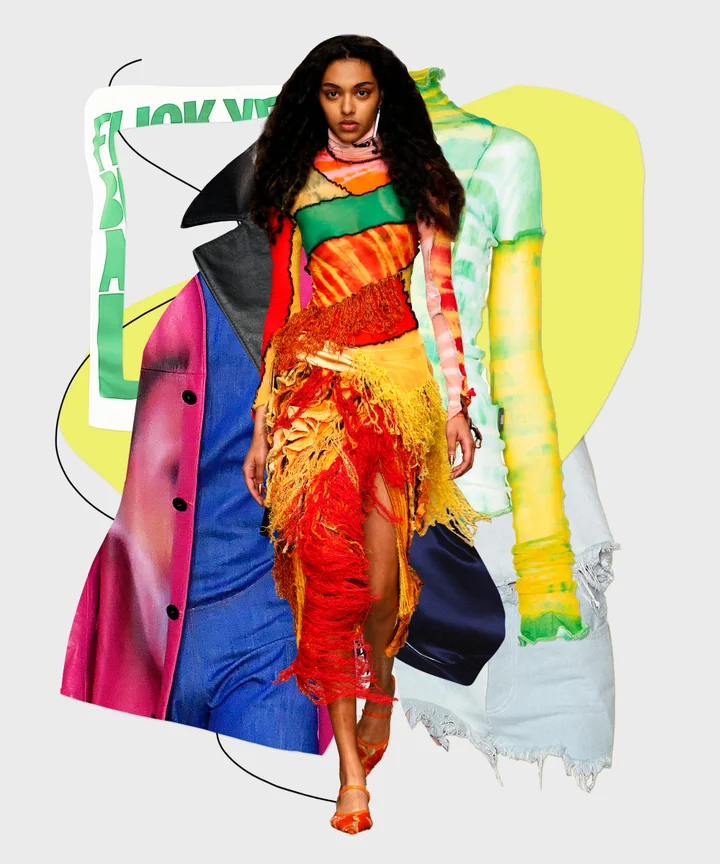Experience the Elegance of Standard Eastern Attire
Embark on a journey with the complex globe of traditional Eastern attire, where each garment tells a story woven with cultural splendor and historic significance. From the vibrant shades of a Chinese qipao to the regal sophistication of a Pakistani shalwar kameez, these garments offer a glimpse into a world where craftsmanship satisfies creativity. The combination of elegant fabrics and delicate embroidery techniques creates a tapestry of elegance that goes beyond boundaries and time. Join us as we untangle the keys behind these exquisite items and uncover the appeal of Eastern attire that has captivated generations.
Background of Eastern Clothes
Eastern clothing has an abundant background that dates back centuries, mirroring the varied societies and traditions of regions such as Asia and the Center East. In Asia, typical clothes differs significantly from the vibrant saris worn in India to the stylish bathrobe of Japan.
Throughout background, Eastern clothing has not only offered as a form of clothes yet also as a symbol of social identification and heritage. Today, Eastern clothes proceeds to develop, blending typical aspects with modern style fads to develop one-of-a-kind and timeless styles.
Relevance of Embroidery
Embroidery plays a crucial function in standard Eastern attire, adding elaborate information and cultural importance to garments that have actually been passed down via generations. In Eastern cultures, embroidery is not just ornamental however holds deep symbolic meanings. Each stitch and pattern can share stories, beliefs, and also social standing.
The art of needlework in standard Eastern attire is a labor-intensive process that needs skill and patience. Extremely competent artisans carefully hand embroider elaborate styles onto materials using techniques that have actually been developed over centuries. These embroidered layouts frequently reflect the abundant cultural heritage of the region they originate from, showcasing motifs inspired by nature, mythology, or historic occasions.

Elegant Fabrics Utilized
Extravagant fabrics play a critical role in enhancing the beauty and luxury of typical outfit throughout diverse Eastern societies. Silk, renowned for its softness and sheen, is a popular choice for several conventional garments because of its elegant feeling and capability to curtain gracefully. In countries like India, China, and Japan, silk has a lengthy history of being utilized in standard clothing, signifying wealth and condition.
Another widely made use of elegant textile is brocade, characterized by complex patterns woven into the product. Brocade adds a touch of elegance to garments and is usually seen in ceremonial attire and official wear. Velour, with its deluxe texture and abundant look, is additionally a popular selection for standard attire in Eastern cultures, especially for unique celebrations and joyful occasions.
In addition, fabric, chiffon, and satin are regularly utilized for their lightweight and running qualities, adding a feeling of special and sophistication to garments. These luxurious materials not only elevate the aesthetic charm of conventional Eastern clothes yet likewise contribute to the overall attraction and appeal of the user.
Craftsmanship Methods
Typical outfit in different cultures showcases impressive workmanship strategies that are given through generations, highlighting the skill and artistry associated with creating these splendid garments. Each decoration, stitch, and needlework is thoroughly crafted to produce timeless items that personify the cultural heritage and practices of the region. The workmanship techniques utilized in traditional Eastern clothing frequently involve intricate handwork, such as hand weaving, hand needlework, and hand beading, which need precision and attention to information.
Artisans who specialize in these techniques undertake years of training to ideal their abilities and grasp the typical techniques of garment construction. Using premium materials incorporated with professional craftsmanship causes garments that not just look visually magnificent but also stand the test of time. The commitment to preserving these workmanship methods ensures that each item of conventional Eastern clothing is an artwork, reflecting the abundant cultural background and heritage of the region.
Ageless Beauty and Elegance

The detailed embroidery, fragile beadwork, and elegant textiles utilized in conventional Eastern clothing add to its unrivaled elegance. The precise creation gave through generations makes certain that every piece radiates and informs a story class and elegance.
Moreover, the timeless silhouettes and graceful draping of typical Eastern clothes add to its long-lasting charm. The streaming lines and classy designs produce a feeling of harmony and equilibrium that is both emotionally fascinating and aesthetically appealing.
Essentially, the classic beauty and appeal of typical Eastern outfit offer as a testimony to the ability and artistry of the artisans that commit their lives to preserving these charming sartorial practices. - eastern wear pakistan
Conclusion
Finally, the sophistication of standard Eastern attire is a testament to the rich history, social relevance, and elaborate workmanship of the region. From the intricate needlework to the elegant textiles and classic elegance, each garment tells a story and mirrors the cultural identity of its origins. Embracing Eastern attire allows one to appreciate the artistry and elegance that have actually been given via generations, developing truly splendid and fascinating pieces.
Embark on a journey via the complex world of conventional Eastern outfit, where each garment tells a story woven with cultural richness and historical significance.Needlework plays an essential duty in standard Eastern clothes, adding elaborate details and social relevance to garments that have been passed down through generations.Glamorous fabrics play a crucial duty in boosting the beauty and opulence of typical clothes across varied Eastern societies. The craftsmanship methods made use of in typical learn this here now Eastern clothing often entail elaborate handwork, such as hand weaving, hand embroidery, and hand beading, which call for precision and attention to information.
In conclusion, the style of standard Eastern attire is a testament to the abundant click this link history, social relevance, and elaborate workmanship of the region.
Comments on “Festive Season Fashion: Eastern Wear Pakistan Styles for each Event”